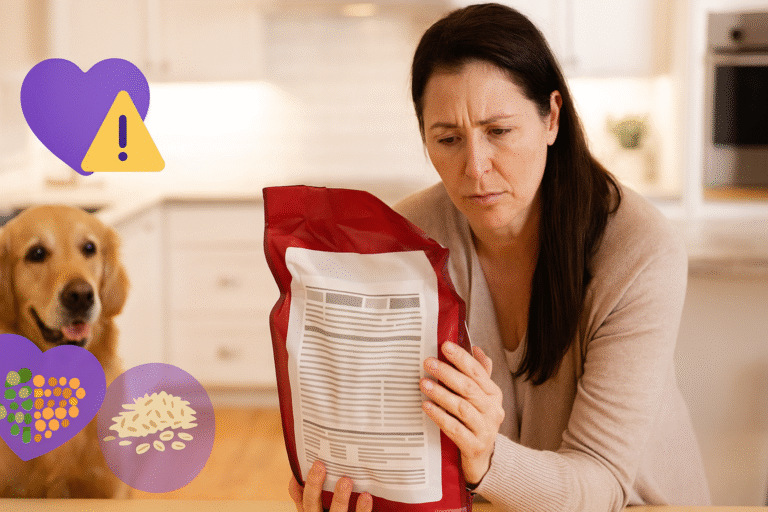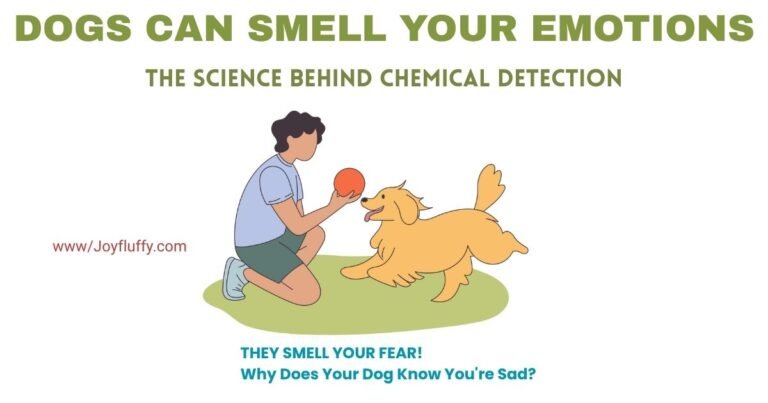5 Signs Your Dog Needs a Mental Health Day
5 Signs Your Dog Needs a Mental Health Day (And How to Give Them One)
Just like humans, our furry companions experience stress, anxiety, and mental exhaustion. Recognizing when your dog needs a mental health day and knowing how to provide one can make a tremendous difference in their overall wellbeing and happiness. Let’s explore the key signs to watch for and practical solutions to help your beloved pet recharge.
Understanding Your Dog’s Mental Health
Dogs are incredibly intuitive creatures who thrive on routine, social interaction, and mental stimulation
While we often focus on physical health through regular vet checkups and proper nutrition, emotional wellbeing is equally important for our canine companions. Dogs experience the world through their emotions and instincts, making them particularly susceptible to stress and mental fatigue when their needs aren’t met.
Mental exhaustion in dogs manifests differently than physical tiredness. A physically tired dog will rest and recover relatively quickly, but a mentally exhausted dog shows behavioral changes that persist even after adequate physical rest. Understanding this distinction helps pet owners recognize when their dog needs more than just a nap.
The good news is that with proper attention and care, you can help your dog maintain excellent mental health throughout their life. Learning to identify the warning signs early prevents more serious behavioral issues and strengthens the bond between you and your furry friend.
The 5 Critical Warning Signs
Watch for these behavioral changes that indicate your dog needs a mental health day
Changes in Sleep Patterns
Sudden shifts in sleeping habits deserve immediate attention. Your dog might be experiencing mental exhaustion if you notice:
- Sleeping significantly more than usual throughout the day
- Struggling to settle down for rest despite appearing tired
- Frequent waking during the night with restless behavior
- Choosing sleep over previously exciting activities
These disruptions often stem from overstimulation, routine changes, or accumulated environmental stress. Just as humans struggle with sleep when mentally overwhelmed, dogs experience similar difficulties when their emotional needs aren’t being met.
Loss of Interest in Favorite Activities
When your typically enthusiastic pup suddenly shows disinterest in things that usually make their tail wag, this signals potential mental health concerns:
- Turning away from beloved toys and games
- Showing reluctance during walk time
- Displaying minimal excitement for treats or meals
- Avoiding interaction during playtime
This diminished enthusiasm resembles the emotional flatness humans experience during mental exhaustion. Your dog is communicating that their mental batteries have run low and they lack the emotional energy to engage in their usual enthusiastic manner.
Increased Irritability or Aggression
Perhaps the most concerning sign is uncharacteristic irritability or aggressive behavior from your normally friendly dog:
- Snapping or growling at people or other animals
- Showing defensiveness over space or resources
- Displaying impatience with situations they normally handle well
- Reacting negatively to being touched or approached
Mental exhaustion lowers tolerance thresholds. This aggression isn’t meanness or a permanent personality change, but rather a stress response from a dog whose mental and emotional resources have been depleted. They’re communicating that they need space, rest, and reduced demands.
Excessive Self-Soothing Behaviors
Dogs employ various self-soothing mechanisms when feeling stressed or overwhelmed. Watch for these repetitive behaviors:
- Obsessively licking paws, legs, or other body parts
- Excessive chewing on toys, furniture, or themselves
- Repetitive pacing or circling behaviors
- Over-grooming leading to hair loss or skin irritation
These behaviors release endorphins that provide temporary stress relief. However, when they become excessive or compulsive, they indicate your dog’s stress levels have exceeded their ability to cope through normal means, making a mental health day crucial.
Withdrawal and Avoidance Behavior
Social withdrawal represents your dog’s instinctive attempt to reduce stimulation and find peace. Your typically social dog might suddenly:
- Prefer hiding under furniture or in quiet spaces
- Stay in another room away from family activities
- Show reluctance to greet visitors they normally love
- Avoid eye contact and physically move away when approached
- Seek small, enclosed spaces like closets for retreat
This withdrawal differs from simple tiredness. Dogs experiencing mental fatigue consistently seek isolation even after adequate physical rest because their issue is emotional and mental depletion requiring a different kind of recovery.
How to Give Your Dog a Proper Mental Health Day
Implementing an effective mental health day requires thoughtful planning and execution
Create a Calm Environment
Environmental management forms the foundation of an effective mental health day:
- Reduce household noise levels significantly
- Close curtains to minimize visual stimulation
- Set up a comfortable, quiet retreat space
- Use calming music or white noise
- Maintain comfortable temperature
- Limit visitor access to your home
Provide familiar items like their favorite blanket or toys that carry comforting scents. If you have multiple pets, consider temporary separation to give your stressed dog complete peace and solitude.
Minimize All Demands
Significantly reduce physical and mental demands throughout the day:
- Skip training sessions completely
- Keep walks brief and low-key in familiar areas
- Avoid introducing new experiences
- Don’t engage in interactive play
- Respond calmly without escalating excitement
- Allow your dog to initiate all interactions
Think of this day as a reset button for their nervous system. Success comes through sustained calm rather than bursts of activity, even if your dog shows momentary interest in play.
Provide Comfort and Security
Physical comfort plays a crucial role in mental recovery:
- Ensure access to comfortable resting spots
- Consider orthopedic bedding for older dogs
- Use anxiety wraps if your dog finds them helpful
- Try calming pheromone diffusers
- Stay nearby but avoid hovering
- Offer gentle massage if your dog enjoys touch
Your calm presence provides security without demanding interaction. This balance between availability and space allows your dog to relax more fully than if left completely alone or constantly engaged.
Offer Calming Activities
Certain low-key activities support relaxation without creating stress:
- Gentle massage with long, slow strokes
- Simple puzzle toys well below their skill level
- Lick mats with soft spreads for soothing activity
- Calm petting sessions if they enjoy touch
- Quiet time together without demands
The goal isn’t mental exercise but gentle, positive distraction that doesn’t tax depleted resources. Always watch your dog’s body language to ensure activities are calming rather than stimulating.
Maintain Core Routines
While reducing demands, maintain foundational routines for security:
- Keep meal times on regular schedule
- Maintain bathroom break timing
- Provide predictability in daily structure
- Feed in quiet locations
- Keep bedtime routines consistent
Predictability reduces stress, and maintaining these core routines provides security even while other activities are minimized. This consistency helps your dog understand that while today is different, the fundamental structure of their life remains stable.
Monitor Without Hovering
Observe periodically to ensure genuine relaxation is occurring:
- Look for deep, even breathing patterns
- Check for loose, relaxed body posture
- Notice if they can settle into sleep
- Avoid constant checking that creates anxiety
- Take notes on what helps most
Understanding what works best for your specific dog allows you to provide more effective mental health support in the future. Every dog has unique preferences for relaxation, from complete silence to gentle background noise.
Daily Mental Health Support
Preventing mental exhaustion through daily practices is more valuable than frequent intensive recovery
Establish Consistent Routines
Dogs thrive on predictability. Maintain regular times for meals, walks, play, and rest. This predictability reduces anxiety by helping your dog know what to expect throughout their day.
When changes become necessary, introduce them gradually rather than making sudden shifts that can destabilize your dog’s sense of security. Consistency builds confidence and emotional resilience.
Balance Activity and Rest
Ensure adequate physical exercise appropriate to your dog’s age, breed, and health status. Physical activity releases stress and promotes better sleep quality.
However, balance activity with rest periods. Over-exercising can contribute to mental exhaustion rather than preventing it. Find the balance that keeps your dog engaged without causing stress.
Provide Mental Enrichment
Incorporate mental stimulation through puzzle toys, scent work, training sessions, and novel experiences in manageable doses.
Mental enrichment keeps dogs satisfied, but too much can overwhelm them. Always follow stimulating activities with calm-down time to help them process and recover from the experience.
Create Safe Spaces
Every dog needs access to a safe space where they can retreat when feeling overwhelmed. This might be a crate, specific room, or even under furniture.
Ensure all family members understand that when your dog is in their safe space, they should not be disturbed except for essential care needs. This guaranteed refuge reduces overall stress levels.
Build Positive Social Experiences
Focus on creating positive, low-pressure social experiences rather than forcing situations that cause stress. Quality matters far more than quantity in social interactions.
Never force interactions when your dog shows reluctance. Work at their pace, rewarding calm behavior and allowing them to approach new people or animals on their own terms whenever possible.
Prioritize Quality Sleep
Dogs need twelve to fourteen hours of sleep daily, with puppies and seniors often needing more. Ensure quiet periods throughout the day for undisturbed rest.
Establish consistent bedtime routines and maintain comfortable sleep environments. Be mindful of interrupting deep sleep, as consistently disrupting rest contributes to mental exhaustion over time.
When to Seek Professional Help
While mental health days and daily prevention support many dogs, some situations require professional intervention. Recognizing when DIY approaches are insufficient ensures your dog receives appropriate care before issues escalate.
Red Flags Requiring Professional Support
Seek consultation with a veterinarian or certified veterinary behaviorist if your dog shows:
- Persistent anxiety or stress that doesn’t improve with rest and environmental management
- Destructive behavior causing injury or significant property damage
- Aggression posing safety risks to people or other animals
- Self-harming behaviors such as excessive licking causing wounds or hair loss
- Sudden and severe behavioral changes without apparent cause
- Need for increasingly frequent mental health days without lasting improvement
Types of Professional Support
Start with your regular veterinarian, who can rule out medical issues contributing to behavioral changes and provide initial behavioral guidance. Many physical health problems manifest through behavioral symptoms, so medical evaluation forms an essential first step.
For complex behavioral issues, a certified veterinary behaviorist or certified professional dog trainer specializing in behavior modification can provide expert assessment and treatment plans. These professionals use evidence-based techniques to address anxiety, fear, and stress-related behaviors.
Some dogs benefit from anti-anxiety medication as part of a comprehensive treatment plan. Medication isn’t a cure-all, but for dogs with severe anxiety, it can provide the emotional stability needed to make progress. Never feel guilty about exploring medication options if recommended by a veterinarian.
Understanding Different Dogs’ Needs
Mental health needs vary based on breed, age, personality, and life experiences
Breed and Energy Considerations
High-energy working breeds like Border Collies or Australian Shepherds require substantial stimulation but also need guidance in learning to settle and relax. Their drive can lead to chronic overstimulation if not balanced with rest.
Lower-energy companion breeds might need less intense stimulation but more consistent social connection. These dogs might experience mental health issues primarily from isolation rather than insufficient activity.
Life Stage Considerations
Puppies experience rapid developmental changes creating stress despite boundless energy. They need substantial rest between activities to process new experiences and consolidate learning.
Adult dogs typically have the greatest resilience, but still need attention during life changes. Senior dogs face declining capabilities that can create frustration, along with potential cognitive decline affecting their ability to cope with stimulation.
Dogs with Special Histories
Rescue dogs, particularly those from neglectful or abusive backgrounds, often carry trauma affecting their mental health and stress tolerance. These dogs might need more frequent support and more gradual approaches to new experiences.
Building trust takes time, and setbacks are normal. Prioritize safety and security over pushing for progress, allowing these dogs to set the pace for new experiences and relationship building.
The Human Factor in Canine Mental Health
Our own stress levels, emotional states, and behavior significantly impact our dogs’ mental health. Dogs are remarkably perceptive about human emotions and can become stressed in response to their owners’ anxiety, anger, or sadness.
Creating Calm Together
Practice calm, consistent interactions with your dog even when you’re feeling stressed. Take deep breaths before engaging with them, speak in a lower, slower tone, and move deliberately rather than frantically. These adjustments help both you and your dog remain calmer.
Consider implementing relaxation practices that include your dog, such as calm petting sessions, gentle walks in nature, or simply sitting quietly together. These shared calm experiences strengthen your bond while providing mutual stress relief.
Realistic Expectations and Self-Compassion
Many pet owners place unrealistic expectations on themselves regarding their dog’s care and behavior, leading to guilt and stress. Understand that no owner is perfect, and occasional mistakes don’t permanently damage your dog’s mental health.
What matters is the overall pattern of care, consistency, and responsiveness to your dog’s needs. Give yourself permission to have bad days and make mistakes. Self-compassion allows you to remain emotionally regulated enough to provide the calm, consistent presence your dog needs.
Key Takeaways for Dog Mental Health
Essential points to remember about supporting your dog’s emotional wellbeing
Early Recognition Matters
Identifying mental health issues early prevents escalation into serious behavioral problems. Stay attuned to subtle changes in your dog’s behavior, sleep patterns, and enthusiasm levels.
Prevention is Powerful
Daily mental health support through consistent routines, balanced activity, and safe spaces is more effective than frequent intensive recovery periods. Build prevention into your daily life.
Every Dog is Unique
What works for one dog might not work for another. Observe your individual dog’s responses and tailor your approach to their specific personality, needs, and preferences.
Professional Help is Valid
Don’t hesitate to seek professional guidance when needed. Veterinarians and certified behaviorists provide valuable expertise for complex or persistent mental health issues.
Recovery Takes Time
Mental health improvement is a process, not an instant fix. Be patient with your dog’s progress and celebrate small victories along the way to better emotional wellbeing.
Your Wellbeing Matters Too
Your emotional state directly impacts your dog. Taking care of your own mental health enables you to provide better support for your canine companion.
Moving Forward: Building a Mentally Healthy Life for Your Dog
Recognizing when your dog needs a mental health day and knowing how to provide one effectively represents an important aspect of responsible, compassionate pet ownership. By staying attuned to the five key warning signs and implementing effective recovery strategies, you can help your dog maintain excellent emotional balance throughout their life.
Remember that every dog is unique, and discovering what works best for your specific companion takes time, observation, and willingness to adapt. Pay attention to patterns in what stresses your dog, what helps them relax, and how quickly they recover from challenging experiences.
Your relationship with your dog is a partnership where both parties’ wellbeing matters. By taking your dog’s mental health seriously, responding compassionately to their needs, and seeking professional help when necessary, you provide the foundation for a happy, balanced life together.
Start today by observing your dog more closely, noting their stress signals and relaxation cues. Implement small changes that support their mental health, whether establishing more consistent routines, providing better safe spaces, or simply spending more quality calm time together. These incremental improvements accumulate into significant positive impacts on your dog’s overall mental wellbeing and quality of life.






